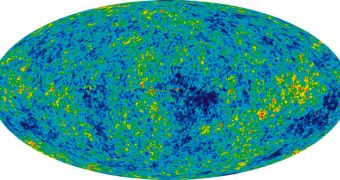Three new research studies published over the past few days in the online journal arXiv provide a number of arguments against a recently-proposed theory, stating that collisions between black holes took place even before the Big Bang exploded our Universe into being.
The idea was proposed by University of Oxford theoretical physicist Roger Penrose and colleague Vahe Gurzadyan, who is based at the Yerevan Physics Institute in Armenia.
In their experiments, the two looked at temperature variations in the cosmic microwave background (CMB), and found concentric, circular patterns, which they construed as an indicator that several Universes existed before our own.
Penrose and Gurzadyan explains that collisions between supermassive black holes – taking place before the Big Bang – would have generated gravitational waves capable of creating the circular CMB patterns.
But their research is now challenged by three separate studies. All of them reproduced the original research, and arrived at different conclusions.
University of Oslo experts Ingunn Wehus and Hans Kristian Eriksen, University of British Columbia scientists Adam Moss, Douglas Scott and James Zibin, and Canadian Institute for Theoretical Astrophysics physicist Amir Hajian all disagree with the proposal.
One of the things all studies agree upon is that the CMB indeed contains low-variance circles in its structure. But how each expert group interprets the existence of these circles is another matter entirely.
“The result obtained by Gurzadyan and Penrose does not in any way provide evidence for Penrose's cyclical model of the Universe over standard inflation,” Zibin explains, quoted by Nature News.
Upon reading the three studies, Gurzadyan replied to them in arXiv, saying that there is bound to be some disagreement in the community, but arguing that the new model may explain observable data even better than inflation can.
The researcher steered clear of arguing that the CMB circles constitute evidence of the new Penrose model, but added instead that “we have found some signatures that carry properties predicted by the model.”
At this point, the main theory about how the Universe appeared state that a quantum fluctuation in the hot and dense state that formed the Cosmos' seed is what triggered a rapid inflation of the stuff, during an event called the Big Bang.
The Universe grew explosively in the first millionths of a second of its existence, and continues to do so, albeit at a much slower rate.

 14 DAY TRIAL //
14 DAY TRIAL //